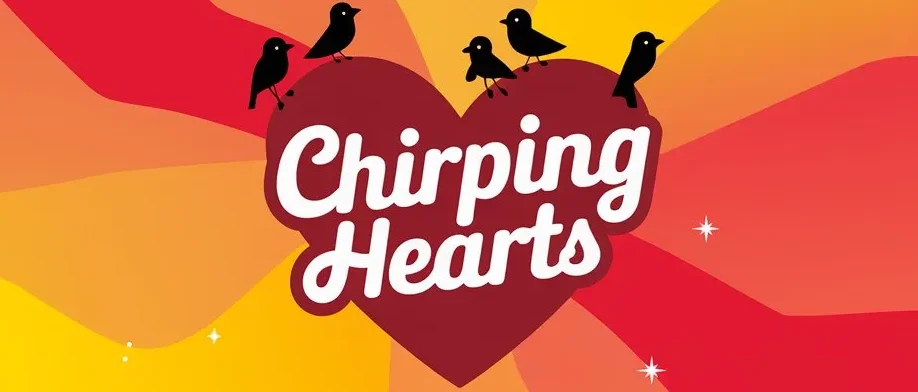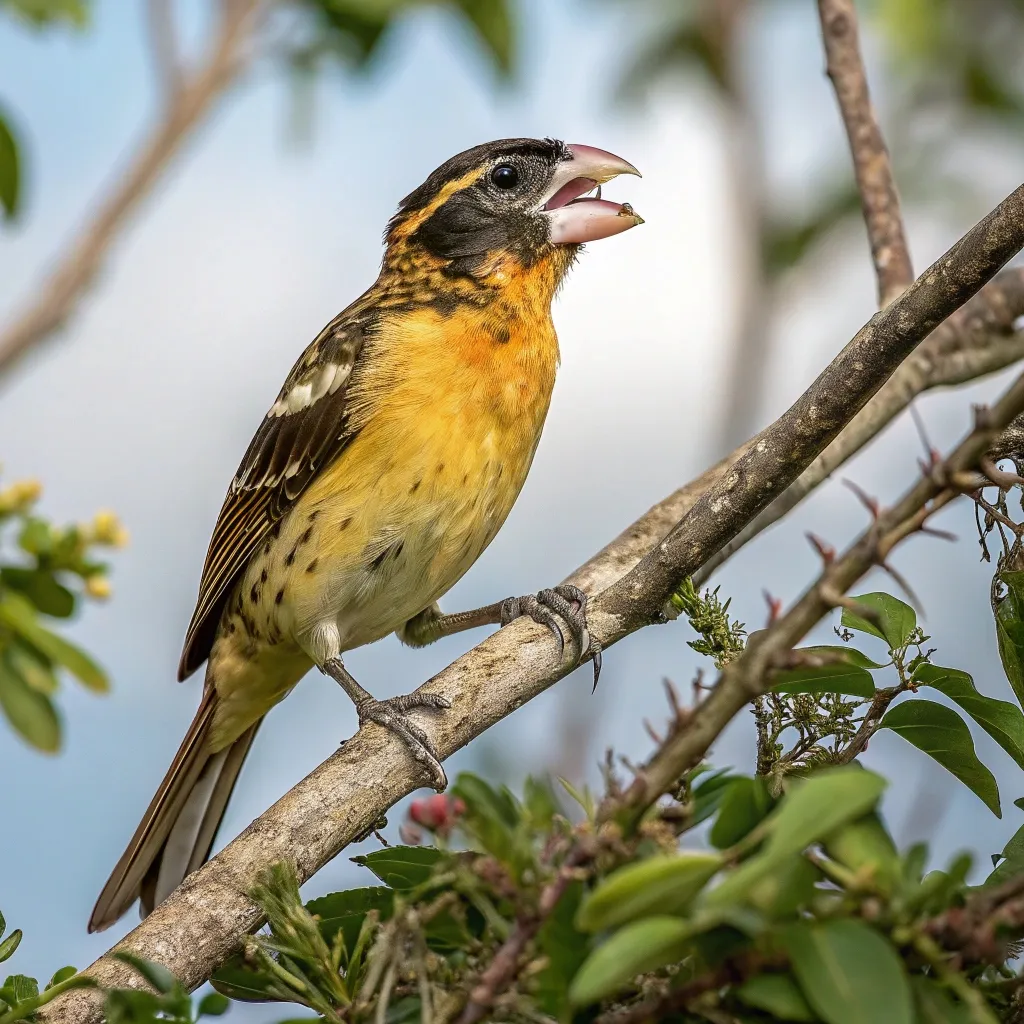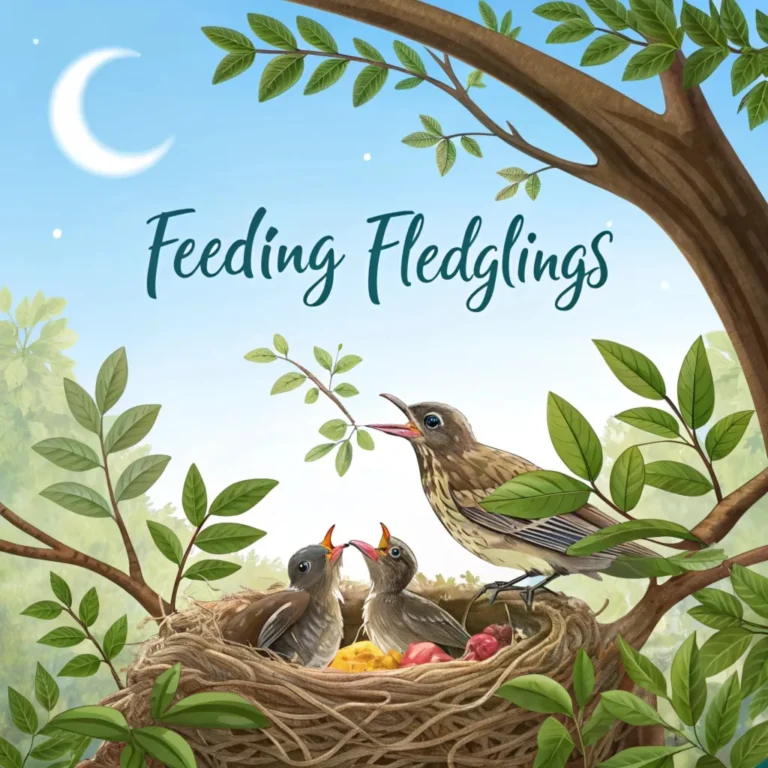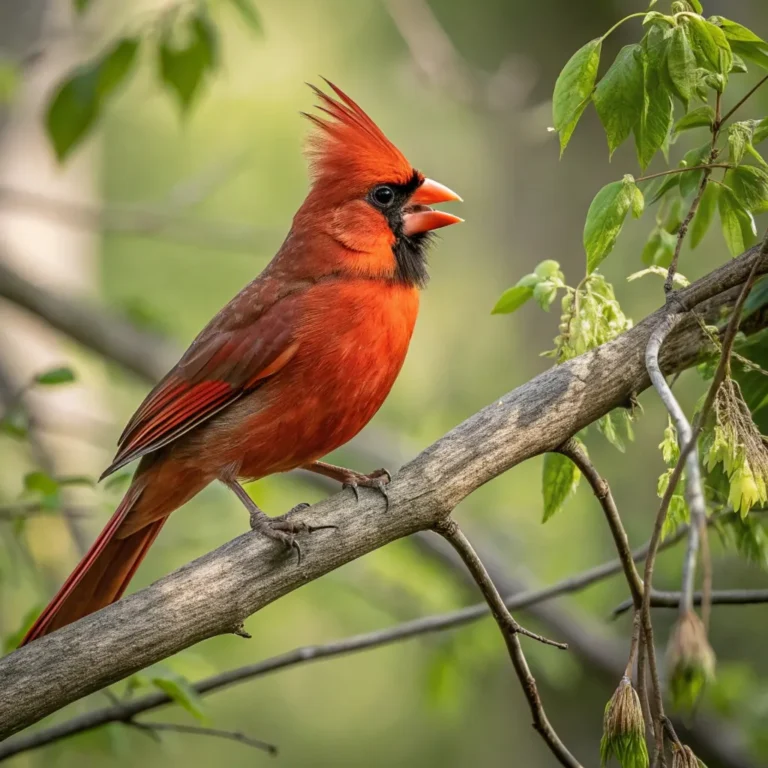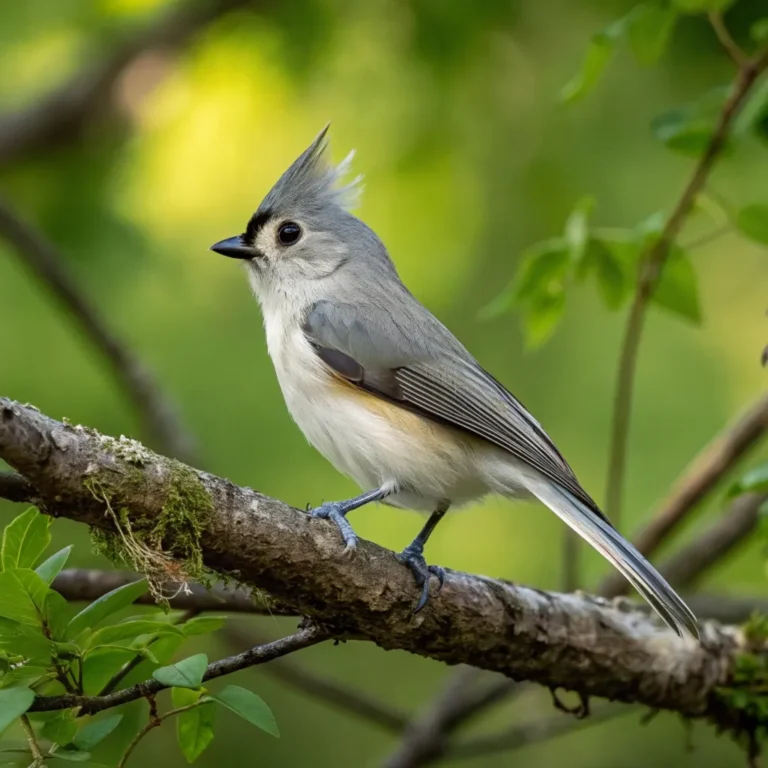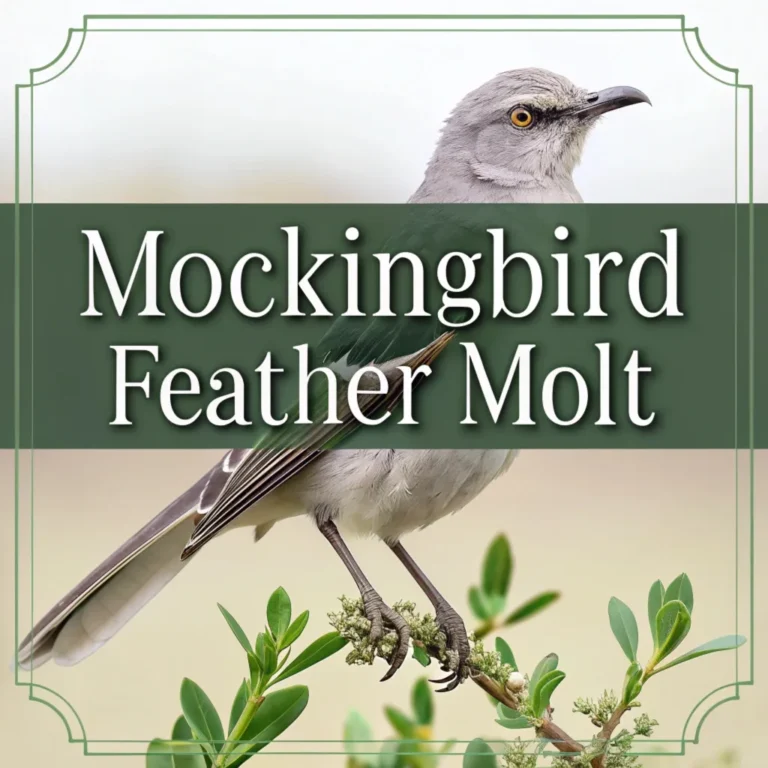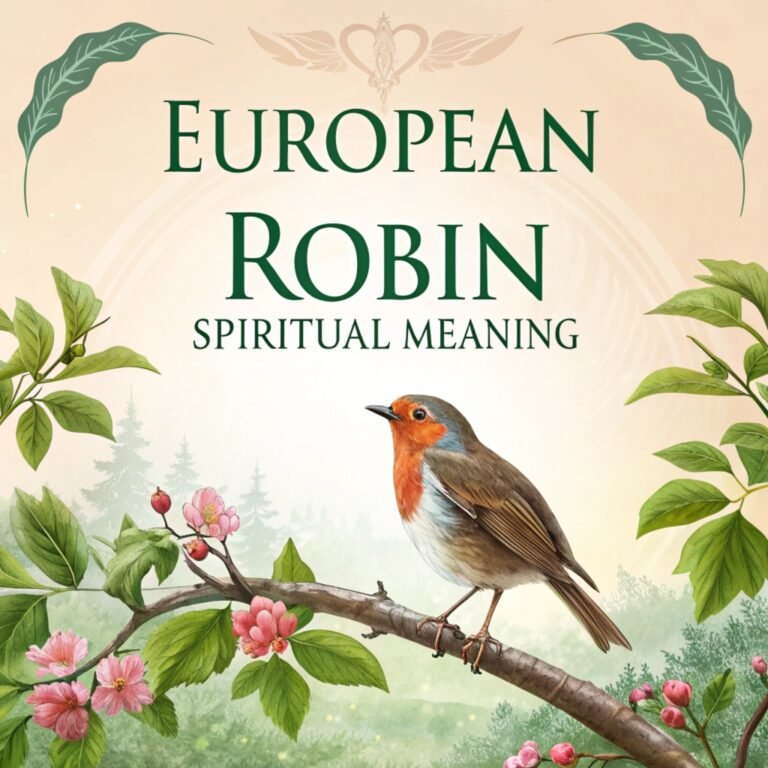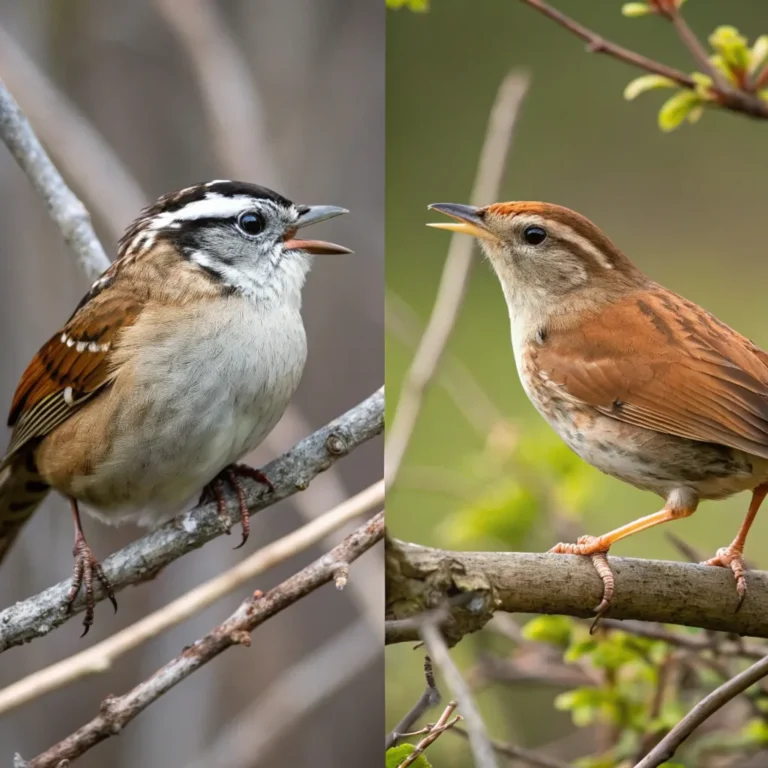Black-Headed Grosbeak Juvenile Guide: Understanding Its Development Stages
The Black-Headed Grosbeak, known for its striking plumage and melodious song, is a fascinating bird that captivates bird enthusiasts and ornithologists alike.
While much attention is given to adult Black-Headed Grosbeaks, understanding their juveniles is equally important.
This comprehensive guide delves into the life of Black-Headed Grosbeak juveniles, covering everything from their appearance and developmental stages to their habitats, diet, and behaviors.
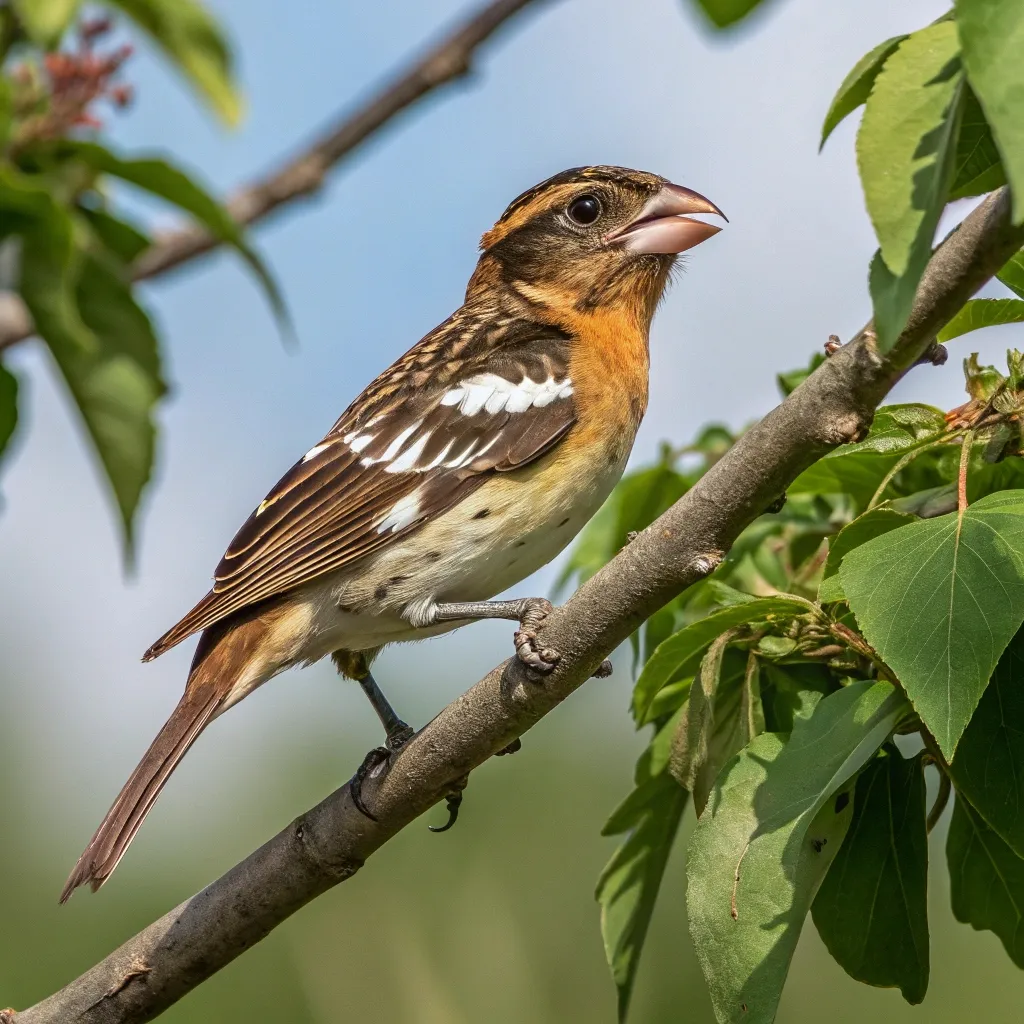
Key Takeaways
- Development Stages: Juveniles pass through four stages: hatchling, nestling, fledgling, and juvenile before becoming adults.
- Appearance: Juveniles have duller plumage that changes as they mature, with males developing a black head and orange chest.
- Diet: Their diet includes insects, small fruits, and seeds, which aid in growth and energy.
- Migration: Juveniles embark on their first migration in fall, guided by adults or environmental cues.
- Parental Role: Parents teach juveniles essential skills like foraging and predator recognition, ensuring survival.
1. Understanding the Development Stages of Black-Headed Grosbeak Juveniles
The development of a Black-Headed Grosbeak juvenile involves several critical stages. Initially, they are hatchlings, covered in soft feathers and entirely dependent on their parents for survival and growth.
As they grow, they become nestlings, displaying signs of flight and developing essential survival skills. Once they leave the nest, they are fledglings, capable of short flights but still under parental care.
Finally, they reach the juvenile stage, where they are independent and capable of flight but still lack full adult plumage and breeding capabilities.
Did you know? Juvenile grosbeaks grow rapidly during the first few weeks after hatching due to their high-protein diet provided by their parents.
2. The Appearance and Development of Black-Headed Grosbeak Juveniles
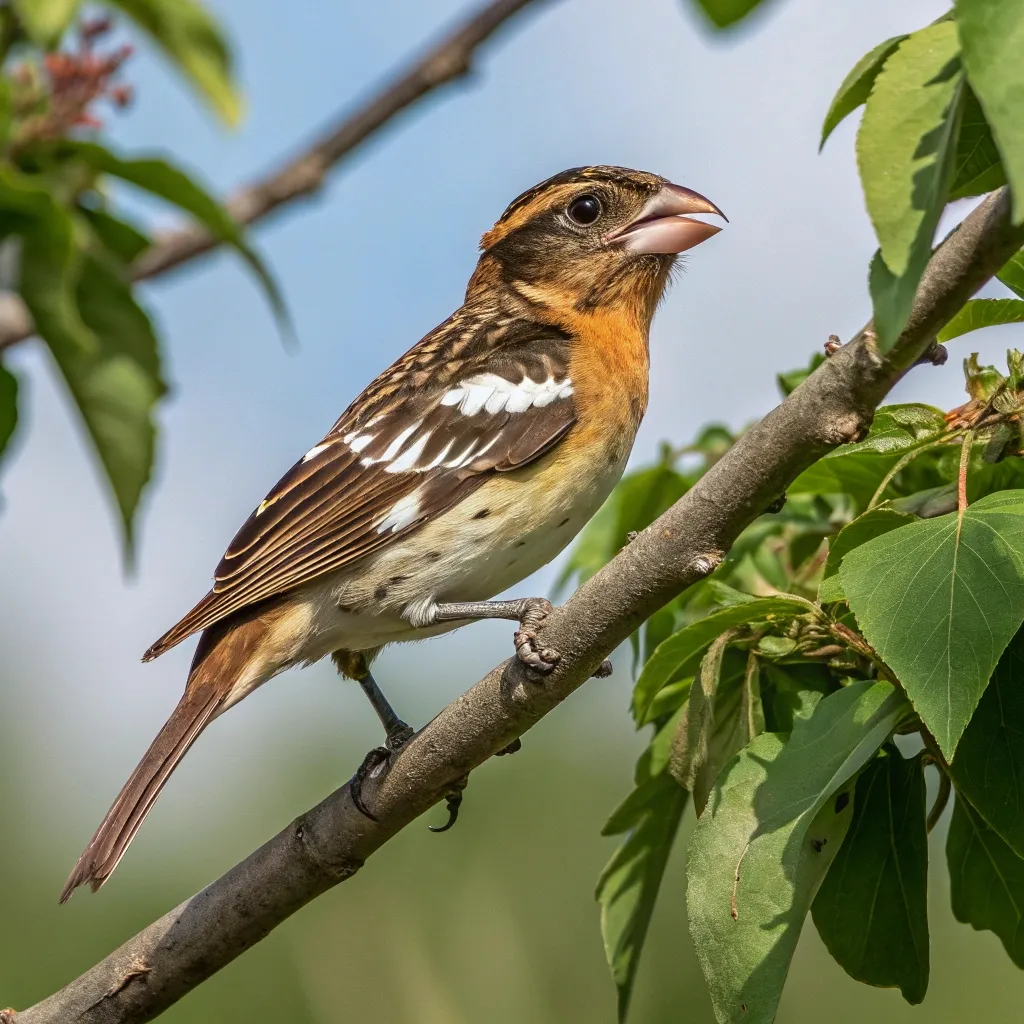
Black-Headed Grosbeak juveniles undergo significant changes in their appearance as they mature. Initially, their feathers are a muted brown, providing camouflage against predators.
This coloration gradually shifts as they mature, with males developing the characteristic black head and bright orange chest, while females retain a more subdued brown and orange coloration.
Their plumage not only helps them blend into their surroundings but also signals maturity as they grow older. The process of molting plays a key role in this transformation.
3. Diet and Feeding Habits of Black-Headed Grosbeak Juveniles
The diet of Black-Headed Grosbeak juveniles primarily consists of insects, which provide the necessary protein for their rapid growth.
Parents also feed them small fruits and seeds, which help diversify their diet and introduce them to the foods they will eat as adults.
As juveniles grow older, they learn to forage independently by observing adult birds. This skill is crucial for survival during migration when food availability may vary.
4. Migration Patterns of Black-Headed Grosbeak Juveniles
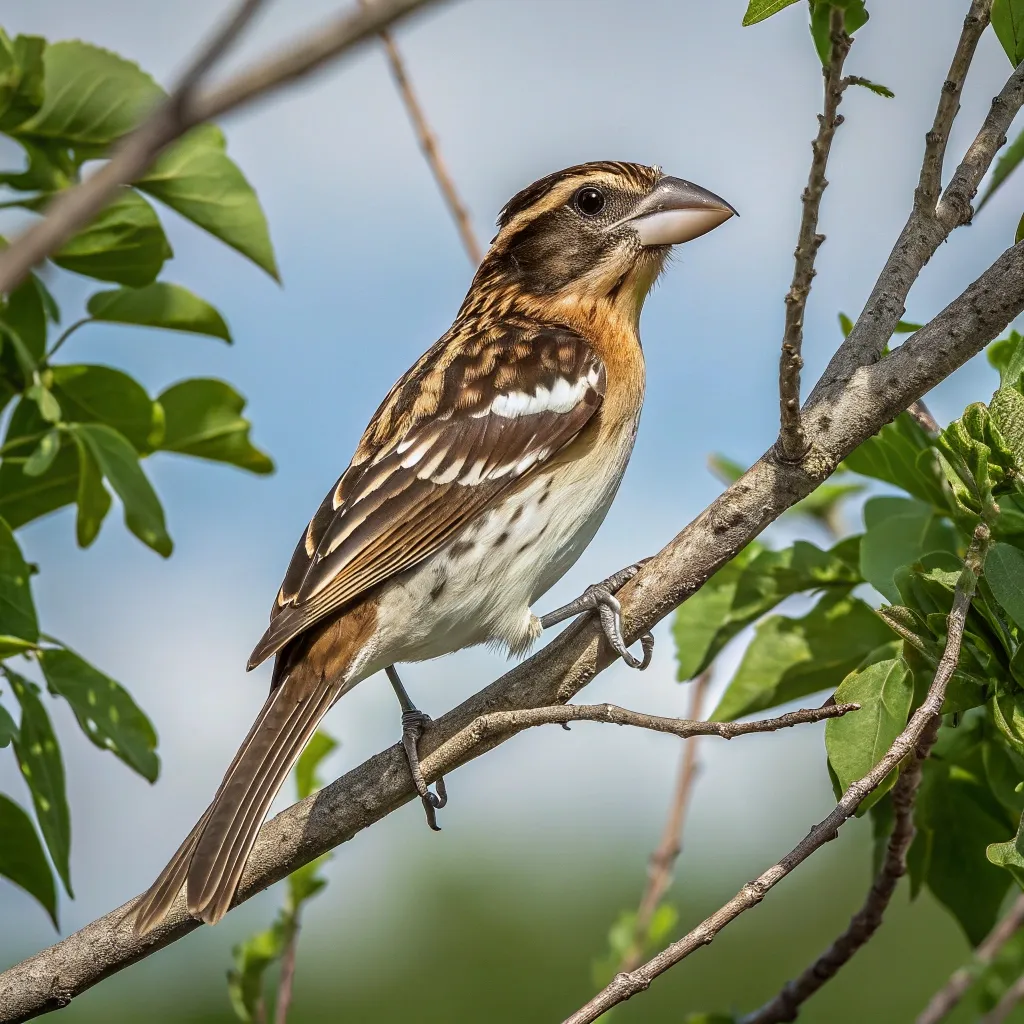
Migration is a critical aspect of the Black-Headed Grosbeak’s life cycle. Juveniles undertake their first migration in the fall, typically following their parents or other adult birds.
This journey is fraught with challenges, including finding food and avoiding predators, but it is essential for their survival.
Interestingly, environmental cues like daylight changes trigger migration instincts in these young birds even if they have never migrated before.
5. Interaction with Adult Birds and Adaptation to Environmental Changes
Interaction between juvenile and adult Black-Headed Grosbeaks is vital for the young birds’ learning and adaptation.
Adult grosbeaks teach juveniles essential skills such as foraging, recognizing predators, and navigating their environment.
This mentorship ensures that juveniles can adapt to changing conditions like food scarcity or new habitats during migration or seasonal shifts.
6. The Role of Parents in Raising Black-Headed Grosbeak Juveniles
Both male and female Black-Headed Grosbeaks play a crucial role in raising their juveniles. They share responsibilities such as incubating eggs and feeding the young.
The female builds the nest using twigs, weeds, rootlets, pine needles lined with plant fibers or animal hair for comfort and safety.
7. The Importance of Understanding Black-Headed Grosbeak Juvenile
Understanding the development stages of Black-Headed Grosbeak juveniles is crucial for their conservation efforts.
By recognizing their needs—such as habitat preservation—we can better contribute to creating environments that support their survival through all life stages.
8. The Life Cycle of Black-Headed Grosbeaks: From Egg to Adult
The life cycle begins with eggs laid in carefully constructed nests by females before hatching into nestlings who rely entirely on parental care for feeding & warmth until fledging occurs roughly two weeks later!
9. The Challenges Faced by Black-Headed Grosbeak Juveniles
Black-Headed Grosbeak juveniles face numerous challenges during their early stages of life. Predators such as snakes, hawks, and squirrels pose constant threats to their safety, especially when they are still in the nest.
Additionally, environmental factors like extreme weather conditions and habitat loss can significantly impact their survival.
Learning to forage independently is another challenge for juveniles. They must identify safe food sources and avoid toxic plants or insects, a skill that takes time and guidance from adult birds.
Fun Fact: Juveniles often mimic the feeding behaviors of their parents, which helps them quickly adapt to independent foraging.
10. Conservation Efforts for Black-Headed Grosbeaks
Conservation efforts play a vital role in ensuring the survival of Black-Headed Grosbeaks, including their juveniles. Protecting their habitats from deforestation and urbanization is critical for maintaining their population. Planting native trees and shrubs can provide essential nesting sites and food sources.
Additionally, reducing pesticide use helps preserve the insect populations that juveniles rely on for nourishment. Public awareness campaigns also encourage bird enthusiasts to create bird-friendly environments in their backyards.
Did you know? Providing water sources like birdbaths can attract grosbeaks to your garden, offering them a safe space to rest and hydrate.
11. The Unique Characteristics of Black-Headed Grosbeak Juveniles
Black-Headed Grosbeak juveniles display unique traits that set them apart from other songbirds.
For instance, they are among the few birds that can safely eat monarch butterflies despite their toxicity. This adaptation allows them to access a food source that many predators avoid.
Juvenile grosbeaks also have a distinctive call that differs from adults. These calls help them communicate with their parents and siblings, especially during feeding times or when they sense danger nearby.
Quick Tip: Listen closely to juvenile grosbeak calls during summer—they are often softer and more repetitive than adult songs.
12. The Role of Adult Grosbeaks in Teaching Juveniles
Adult Black-Headed Grosbeaks play an essential role in mentoring juveniles during their early stages of life. They teach them how to identify predators, find food, and navigate their environment effectively.
This guidance is particularly crucial during the fledgling stage when young birds begin exploring outside the nest.
Parental care extends beyond feeding; adults also demonstrate how to build nests and recognize suitable habitats. These lessons prepare juveniles for independent survival as they transition into adulthood.
Interesting Fact: Male grosbeaks often sing near the nest to deter predators and signal safety to their young ones.
13. How Birdwatchers Can Support Juvenile Black-Headed Grosbeaks
Birdwatchers can play a significant role in supporting juvenile Black-Headed Grosbeaks by creating bird-friendly spaces in their gardens or local parks.
Planting native fruit-bearing trees like elderberries or mulberries provides a reliable food source for these birds.
Installing bird feeders with seeds such as sunflower or safflower can supplement their diet during migration seasons. Avoiding pesticides ensures that insects—the primary food source for juveniles—remain abundant in the ecosystem.
Pro Tip: Use binoculars to observe juvenile grosbeaks from a distance without disturbing their natural behaviors.
14. The Transition from Juvenile to Adulthood
The transition from juvenile to adulthood is marked by physical changes such as molting into brighter plumage (in males) and behavioral shifts like increased independence in foraging and migration.
This period is critical for developing survival skills that will sustain them throughout their lives.
Juveniles gradually integrate into adult flocks during migration, where they learn social behaviors and establish territories upon reaching breeding grounds.
Did You Know? Male grosbeaks start practicing their songs as juveniles, perfecting them over time to attract mates during the breeding season.
15. Why Studying Juvenile Black-Headed Grosbeaks Matters
Studying juvenile Black-Headed Grosbeaks provides valuable insights into the species’ overall health and population trends.
By understanding their growth stages, diet preferences, and challenges, researchers can develop effective conservation strategies tailored to their needs.
This knowledge also helps bird enthusiasts appreciate the intricate life cycle of these stunning birds, fostering a deeper connection with nature and inspiring efforts to protect wildlife habitats.
Final Thought: Every stage of a grosbeak’s life is fascinating, but juveniles offer a glimpse into nature’s resilience and adaptability—a story worth observing and preserving.
FAQs
Q1: What do juvenile Black-Headed Grosbeaks eat?
Juvenile grosbeaks primarily eat insects like caterpillars for protein but also consume small fruits and seeds as they grow older.
Q2: How can I identify a juvenile Black-Headed Grosbeak?
Juveniles have muted brown plumage with streaks on their chest. Males show hints of orange as they mature, while females retain softer tones.
Q3: When do juvenile grosbeaks leave the nest?
Juveniles typically leave the nest around 11–14 days after hatching but remain dependent on parents for another two weeks.
Q4: Do juvenile grosbeaks migrate with adults?
Yes, juveniles often migrate with adult birds during fall, learning routes and survival skills along the way.
Q5: How can I attract juvenile grosbeaks to my garden?
Plant native fruit-bearing trees, provide seed feeders, avoid pesticides, and ensure fresh water sources like birdbaths are available.
This guide offers a detailed look into the fascinating world of Black-Headed Grosbeak juveniles—from their development stages to conservation efforts—helping readers connect with these beautiful birds while contributing to their preservation!

Joyce is the passionate founder of Chirping Hearts, a website dedicated to sharing her love for birds and providing valuable information about avian life. With a background in ornithology and years of experience in birdwatching, Joyce aims to inspire others to appreciate the beauty and diversity of birds. Through her engaging articles and guides, she hopes to foster a community of bird enthusiasts who share her enthusiasm for these incredible creatures. When she’s not writing, Joyce enjoys exploring nature trails and observing birds in their natural habitats.
